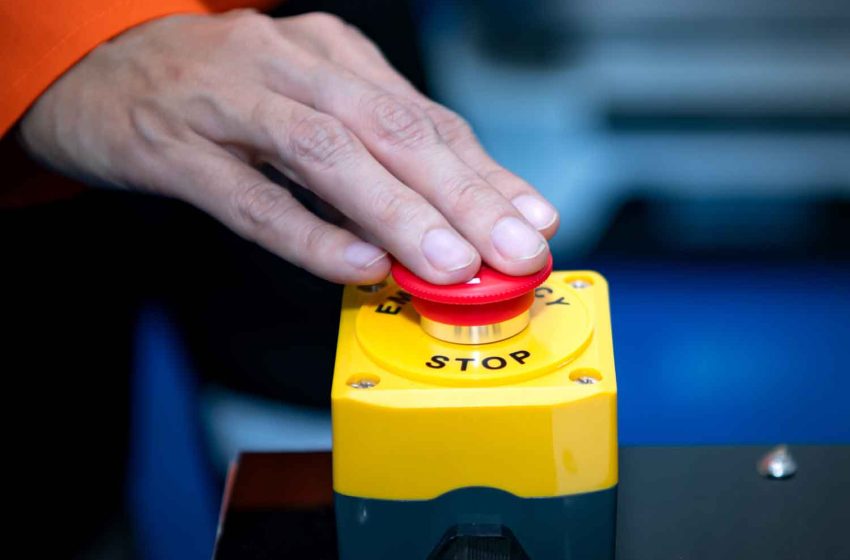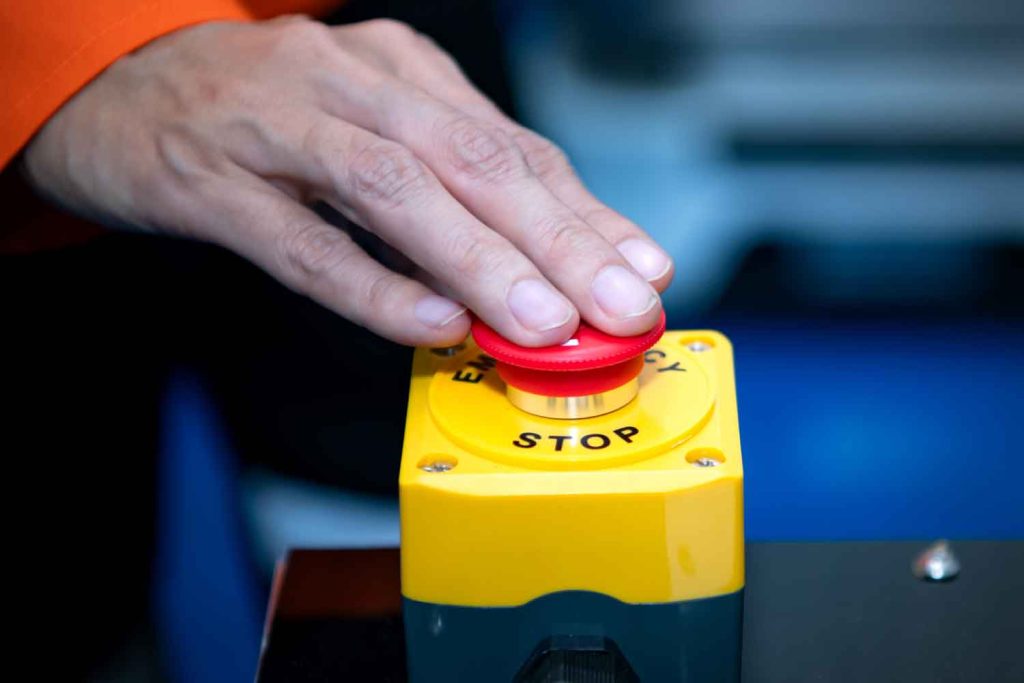Why Don’t They Just Stop?
- Also in TR Cheryl Olson Print Edition
- July 1, 2023
- 0
- 11 minutes read


Utopian visions and unintended consequences
By Cheryl K. Olson
“The decline in smoking prevalence has slowed to a trickle.” That’s how Kenneth Warner of the University of Michigan’s School of Public Health phrased it in a 2013 editorial on the tobacco endgame. With progress stalled, tobacco control advocates searched for dramatic measures to kick-start it. A Google Scholar search for “tobacco endgame” brings up over 7,000 results for the past decade.
One popular idea is to simply declare game over. A 2018 editorial in Tobacco Control pointed to clever ads placed in U.K. newspapers by Philip Morris International saying, “We’re trying to give up cigarettes.” Rephrasing that slogan as “Stop me before I kill again,” the editorial stated, “There is no reason why a plan to phase out cigarette sales cannot be developed and pursued now.”
The disruptions and isolation of the Covid-19 pandemic brought fresh calls in major medical and public health journals to stop marketing smokes. “In this context, now is an opportune time to move toward removing cigarettes from general retail sale,” said a BMJ editorial.
If the tobacco industry is sincere about reducing harm, why don’t they just stop selling cigarettes? “That’s a very common talking point. It’s a nice utopian vision,” says Dave Dobbins, an independent consultant currently working with Altria and former chief operating officer of the Legacy Foundation/Truth Initiative.
What would actually happen if Big Tobacco shut down cigarette sales tomorrow? And more realistically, what actions might speed the day when the last Marlboro or Salem is packaged and trucked? Experts in public health, economics and law enforcement have some thoughts.
‘In the Hands of Criminals’

Cigarette sales could stop, but the desire to buy them wouldn’t. “All industries are a product of supply and demand,” says Dobbins. “And eliminating supply does not eliminate demand.” He pictured equipment idled by Big Tobacco being bought up and put to use by less-scrupulous entities.
“If the tobacco companies stopped selling cigarettes, you would find an explosion in the black market and the counterfeit market,” says Richard Marianos, retired assistant director at the U.S. Bureau of Alcohol, Tobacco, Firearms and Explosives and faculty member at Georgetown University. “They would be smuggled into the United States and supplant that demand that has been voided by the tobacco companies.”
Halting sales of cigarettes would have unintended consequences. Currently, tobacco companies are regulated and taxed, and their products are distributed in legal commerce.
“By taking them out of commerce, you put the market in the hands of criminals who will sell on the street and create additional crime,” says Marianos.
We see an analogous situation unfolding with the regulation of vaping. After the U.S. Food and Drug Administration prioritized enforcement against mint and fruit-flavored prefilled cartridges in January 2020, youth sales of disposable flavored brands soared. On June 22, the FDA announced a “nationwide retailer inspection blitz” that led to warning letters cracking down on the disposable brands Elf Bar and Esco Bars.
“There’s vaping out there that is designed for a tobacco harm reduction strategy, which is good, to get people off combustibles,” Marianos says. “But these disposable vapes with flavors like bubblegum and gummy bear, marketed to kids, made by unregulated factories in China, need to be put away.”
Marianos also points to an additional public health risk from counterfeit or contraband overseas products: “A lot of them are made in facilities that contain rat feces and dirty machines.”
A report in the June 23 issue of the CDC’s Morbidity and Mortality Weekly Report noted an increase in e-cigarette associated cases reported to U.S. poison centers. Sixty percent involved Elf Bar, and more than 90 percent of those were among children younger than five.
Prohibition Lessons
“It’s just not clear that there are methods that are both plausible and coercive enough to enforce a prohibition if people really want drugs,” says Dobbins. “The drug wars in every other field have been an utter failure. I don’t think there’s a lot of hope that there’d be a different result if you declared a drug war on nicotine.”
The U.S. experience with alcohol Prohibition in the early 20th century is enlightening. Entertaining examples of law evasion can be found on the website for the Ken Burns public television documentary about this failed experiment. Grape juice concentrate was sold with sly warnings not to leave it sitting too long, lest it ferment into wine. Home distilling equipment could be bought at hardware stores, and instructions on making booze could be found at the library. In short, “The law that was meant to stop Americans from drinking was instead turning many of them into experts on how to make it.” And the problem of alcohol abuse, far from being solved by Prohibition, was made worse.
“It’s hard for me to imagine the kind of coercive measures a state would have to employ to curtail supply, much less demand,” Dobbins says. “In countries that essentially eliminated marketing and imposed plain labeling or graphic depictions of the death and disease that can occur from cigarette use, those efforts have only very mildly curtailed demand.”
During the Covid-19 pandemic, South Africa enacted a temporary ban for the public good. Research showed that people who smoked were at higher risk for severe illness; this could buckle the healthcare system. Unfortunately, the usual happened: Less than 10 percent of smokers quit. The existing black market ramped up production. Prices increased over 240 percent. When the ban ended, the illicit sellers had a larger share than before. (For other examples, see “Prohibitionists at Work” on Clive Bates’s The Counterfactual website.)
Harm Maintenance?
In 2013, Warner noted the lack of consensus on what the “end of the endgame” might look like for tobacco control. The end of smoking? Of all forms of tobacco use? A nicotine-free population? Or “a more modest tobacco harm minimization objective”?
In that 2018 Tobacco Control editorial, Ruth Malone wrote, “So we should all be clear about one thing: ‘Giving up cigarettes’ for PMI does not mean the company wants people to quit using its addiction sticks. It means they want to get people hooked on a different type of addiction stick.”
Harm minimization looked like a profit-maintenance ploy to skeptics in public health. They felt burned by “light” cigarettes and saw poor adoption of the available nicotine replacement options. As John P. Pierce wrote in Nicotine & Tobacco Research in 2002, “Without more research on whether these products can be substituted effectively for smoking, endorsing harm reduction as a goal could lead to another 25 years of harm maintenance.”
How different things look 21 years later! Novel nicotine alternatives abound. We have data that many people who smoke, including those from vulnerable groups, are indeed willing to substitute these products. Anti-smoking eminences such as Warner now advocate for “nicotine e-cigarettes as a tool for smoking cessation.”
For public health people, it’s hard to let go of the desire to punish Big Tobacco for real and serious past harms. But we can’t wish away the accumulating data. Evidence suggests that helping multinational cigarette makers transform into diversified sellers of noncombustible nicotine products will save more lives with fewer unintended effects. Ditto for helping people who can’t or don’t want to quit smoking switch to satisfying lower risk options.
‘Novelty Items’

Michael Pesko, an associate professor at Georgia State University who studies nicotine policy, gave me the economist perspective. “How do we intervene in a marketplace determined by supply and demand to reduce purchases of combustible tobacco products? No intervention will fully stamp out combustibles, but it may be possible to reduce their use to novelty items,” he says.
He recommends a combination of education and risk-based regulation. “Raising public health awareness about the dangers of combustibles and the harm reduction benefits of reduced-risk tobacco products such as e-cigarettes is a way to reduce demand for combustible tobacco products,” he says. “Heavy regulation of combustibles, such as taxing them, can be used to reduce supply.”
A new article by eight prominent academics and lawyers titled Do Tobacco Companies Have an Incentive to Promote “Harm Reduction” Products? says, yes, they do—provided there is competition from noncigarette companies and appropriate government regulation.
The authors mention multiple ways that tobacco control researchers can add sunshine to speed this transition. This ranges from analyzing the effects of government regulations on competition and the market position of noncombustibles versus cigarettes to monitoring and exposing smoking promoting or alternative discouraging activities by tobacco companies.


